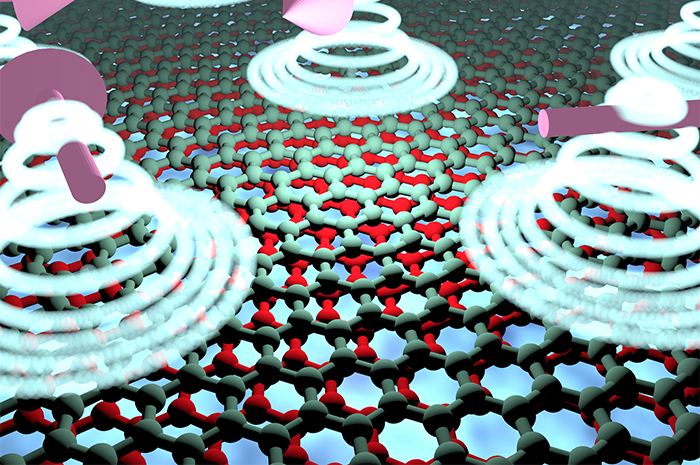A magnetic twist for graphene
Institute for Theoretical Physics (ITP)
A slight twist between two layers of graphene generates a wealth of strongly interacting states. New theory work shows that sandwiching this assembly between ferromagnets forces the “valley” degree of freedom to dominate the physics, enriching the prospects of such twisted bilayer systems even further.

In new theoretical work, doctoral researcher Tobias Wolf, together with Professors Oded Zilberberg and Gianni Blatter at ETH Zurich and Professor Jose Lado at Aalto University, propose a new direction for correlated physics in such materials. The team showed that encapsulating twisted bilayer graphene between ferromagnetic insulators brings to the forefront a degree of freedom that has remained so far somewhat in the shadow for these systems: the “valley”.
The valley degree of freedom arises from local minima in the conduction band of crystalline materials. It shares similarities with the spin degree of freedom, and like spin, the valley too can be exploited for emergent physics and information processing. Intriguingly, the low-energy electronic bands of graphene do have two valleys, but the unconventional states identified so far in twisted bilayer graphene mostly involve exclusively quantum order in the charge or spin degrees of freedom. This invites the question whether the distinct valley degree of freedom can lead to its own family of correlated states in twisted systems.
The first successful isolation of graphene – single layers of carbon atoms – in 2004 triggered a revolution that made two-dimensional materials a prime focus of physics research. The discovery simultaneously opened up exciting perspectives for novel devices. An additional twist, as it were, appeared in recent years. It was shown that a slight rotation between two stacked layers of graphene can induce a variety of intriguing quantum phenomena, including superconductivity, correlated insulating states, and controllable topological states.
Wolf and colleagues now answer this question to the affirmative. In their theoretical studies they had to add one more ingredient though. It turns out that when the twisted graphene layers are encapsulated by ferromagnets, then twist engineering, ferromagnetism and relativistic effects conspire in a way that the emergent valley degree of freedom dominates the behaviour of the assembly. The realm of valley correlated physics promises both interesting physics and novel applications. In particular, the researchers established how their correlated “valley-only” states can be tuned electrically, providing a materials platform in which these novel states could be generated in practice. Moreover, their predictions are not limited to graphene, but should apply as well to other two-dimensional van der Waals materials – opening the door to the new area of correlated “valleytronics”.